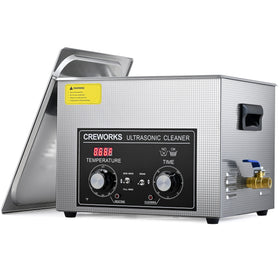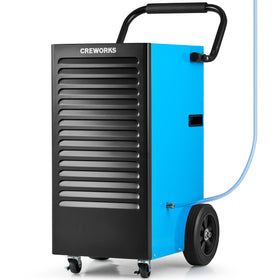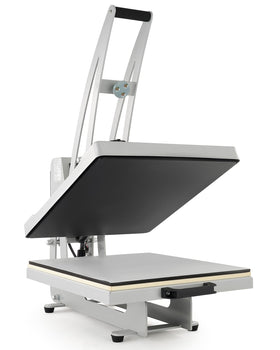With over 10000+ orders
With over 10000+ orders
You could spend 20 minutes hunched over your sink, scrubbing your retainer with a toothbrush and hoping you're getting all the gunk out. Or you could drop it in an ultrasonic retainer cleaner and let thousands of tiny bubbles do the deep cleaning for you.
Remember seeing ripples spread across water when you drop a stone in? Now imagine those ripples happening 20,000 times per second – that's ultrasonic cleaning.
These rapid vibrations create millions of tiny bubbles that blast away buildup from every surface of your retainer, even spots a brush can't reach.
That fuzzy film on your retainer isn't just about looks.
Regular brushing might remove surface debris, but bacteria love hiding in tiny scratches and grooves. Over time, these hidden bacteria colonies can lead to bad breath and potentially harm your oral health.
Dental offices have used ultrasonic technology for decades because it reaches these hidden spots.

Time needed: 3-5 minutes. That's it. Here's how:
If you're serious about retainer care, you need the right equipment.
The Creworks 180W Ultrasonic Retainer Cleaner hits the sweet spot between professional-grade cleaning power and ease of use. Its 40kHz frequency provides the perfect balance – strong enough to eliminate bacteria but gentle on your retainer's material.
What makes this cleaner particularly good for retainers?
First, its 1.6-gallon capacity means you can clean multiple dental appliances at once. The digital control panel lets you set precise cleaning times, preventing over-cleaning that could stress your retainer's material.
Plus, the stainless steel construction means you won't get the chemical leaching that can happen with plastic tanks.
Most people don't realize that temperature plays a crucial role in retainer cleaning.
The Creworks cleaner lets you control temperature between 68-176°F, but for retainers, stick to room temperature or slightly warm water (around 68-75°F).
Hot water can warp your retainer – it's one of the most common ways people accidentally damage their dental appliances.
This is important: stick to retainer-specific cleaners or a tiny bit of antibacterial soap. Avoid:
Change the water and cleaning solution each time you use your ultrasonic cleaner.
Just like when you're washing dishes – you wouldn't want to use yesterday's dishwater for today's plates.
Fresh ultrasonic cleaning solution ensures you're actually cleaning your retainer, not just swishing around old debris.

These devices are pretty sturdy, but a little care goes a long way.
Always keep the tank filled to the right level when using it – running it dry can damage the machine.
Wipe down the tank after use, just like you'd clean your coffee maker. Most ultrasonic cleaners last for years with basic maintenance.
Sometimes things don't go as planned. Here's what to do:
If you found your ultrasonic container cleaners can’t clean your containers well enough, usually, this means one of three things:
Weird noises? That gentle humming sound is normal – it's just those sound waves doing their job. But if you hear rattling, your retainer might be touching the sides of the tank. Reposition it in the center of the basket.
Think of your ultrasonic cleaner as a mini dental spa. While it's cleaning your retainer, it can also tackle:
Just remember to clean these items separately – you don't want to mix bacteria from different appliances.
A daily 3-5 minute cycle keeps your retainer fresh. But if you notice any buildup or odd smells, give it an extra clean. Remember, a clean retainer isn't just about hygiene – it helps your retainer last longer too.

Technology has made a lot of things easier, including keeping your retainer clean. You could stick with the old way - scrubbing and hoping for the best. Or you could let an ultrasonic retainer cleaner like the Creworks 180W do the heavy lifting for you.
It's the same technology your dentist trusts, now available for your bathroom counter. Three minutes, room temperature water, and a gentle cleaning solution are all you need for a deep clean that actually works. No more wondering if you've missed a spot or dealing with that funky smell that just won't go away.
Ready to upgrade your retainer cleaning routine? Head over to Creworks to check out their ultrasonic cleaner. Your retainer (and your mouth) will thank you.











